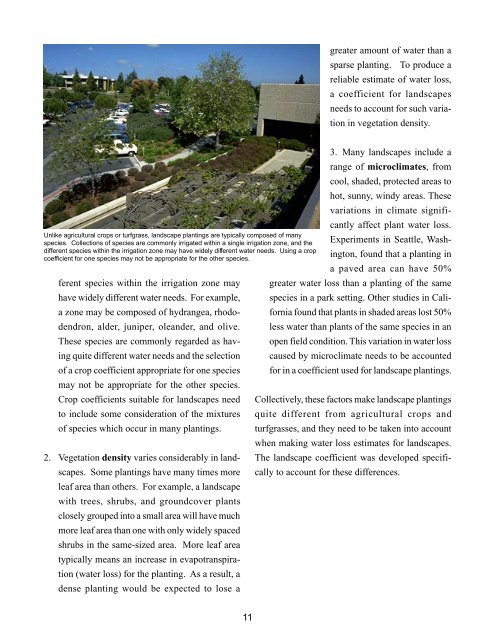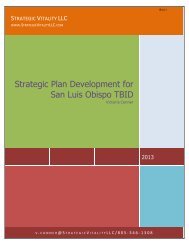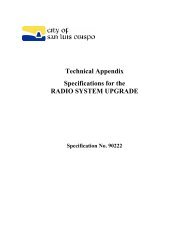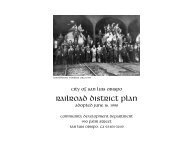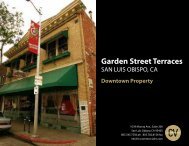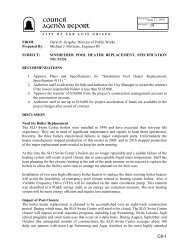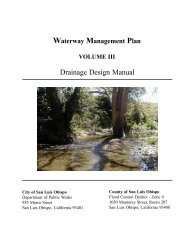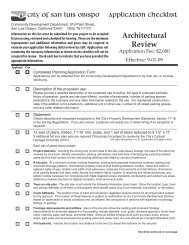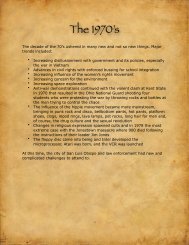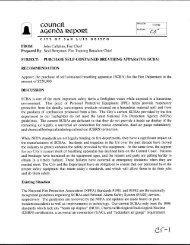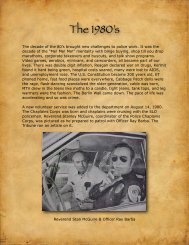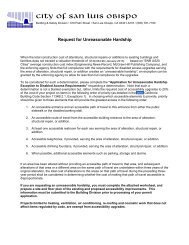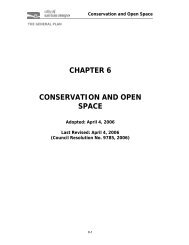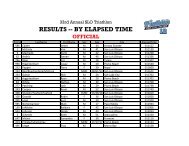Guide to Estimating Irrigation Water Needs of Landscape Plantings
Guide to Estimating Irrigation Water Needs of Landscape Plantings
Guide to Estimating Irrigation Water Needs of Landscape Plantings
You also want an ePaper? Increase the reach of your titles
YUMPU automatically turns print PDFs into web optimized ePapers that Google loves.
greater amount <strong>of</strong> water than a<br />
sparse planting. To produce a<br />
reliable estimate <strong>of</strong> water loss,<br />
a coefficient for landscapes<br />
needs <strong>to</strong> account for such variation<br />
in vegetation density.<br />
Unlike agricultural crops or turfgrass, landscape plantings are typically composed <strong>of</strong> many<br />
species. Collections <strong>of</strong> species are commonly irrigated within a single irrigation zone, and the<br />
different species within the irrigation zone may have widely different water needs. Using a crop<br />
coefficient for one species may not be appropriate for the other species.<br />
ferent species within the irrigation zone may<br />
have widely different water needs. For example,<br />
a zone may be composed <strong>of</strong> hydrangea, rhododendron,<br />
alder, juniper, oleander, and olive.<br />
These species are commonly regarded as having<br />
quite different water needs and the selection<br />
<strong>of</strong> a crop coefficient appropriate for one species<br />
may not be appropriate for the other species.<br />
Crop coefficients suitable for landscapes need<br />
<strong>to</strong> include some consideration <strong>of</strong> the mixtures<br />
<strong>of</strong> species which occur in many plantings.<br />
2. Vegetation density varies considerably in landscapes.<br />
Some plantings have many times more<br />
leaf area than others. For example, a landscape<br />
with trees, shrubs, and groundcover plants<br />
closely grouped in<strong>to</strong> a small area will have much<br />
more leaf area than one with only widely spaced<br />
shrubs in the same-sized area. More leaf area<br />
typically means an increase in evapotranspiration<br />
(water loss) for the planting. As a result, a<br />
dense planting would be expected <strong>to</strong> lose a<br />
3. Many landscapes include a<br />
range <strong>of</strong> microclimates, from<br />
cool, shaded, protected areas <strong>to</strong><br />
hot, sunny, windy areas. These<br />
variations in climate significantly<br />
affect plant water loss.<br />
Experiments in Seattle, Washing<strong>to</strong>n,<br />
found that a planting in<br />
a paved area can have 50%<br />
greater water loss than a planting <strong>of</strong> the same<br />
species in a park setting. Other studies in California<br />
found that plants in shaded areas lost 50%<br />
less water than plants <strong>of</strong> the same species in an<br />
open field condition. This variation in water loss<br />
caused by microclimate needs <strong>to</strong> be accounted<br />
for in a coefficient used for landscape plantings.<br />
Collectively, these fac<strong>to</strong>rs make landscape plantings<br />
quite different from agricultural crops and<br />
turfgrasses, and they need <strong>to</strong> be taken in<strong>to</strong> account<br />
when making water loss estimates for landscapes.<br />
The landscape coefficient was developed specifically<br />
<strong>to</strong> account for these differences.<br />
11


